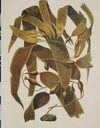Practicum 1 Flashcards
(198 cards)

Cocci bacteria (spherical prokaryotes) Colorized SEM of Staphylococcus aureus. These bacteria cause skin and wound infections, food poisoning, and toxic shock syndrome.
coccus (pl., cocci)
A bacterium with a spherical shape. Compare with bacillus, spirillum, vibrio, and spirochete.
bacillus (pl., bacilli)
A rod-shaped bacterium. Compare with coccus, spirillum, vibrio, and spirochete.
spirochete
A long, flexible, helical bacterium. Compare with spirillum, vibrio, bacillus, and coccus.
spirillum (pl., spirilla)
A long, rigid, helical bacterium. Compare with spirochete, vibrio, bacillus, and coccus.
vibrio.
A spirillum (spiral-shaped bacterium) that is shaped like a comma. Compare with spirillum, spirochete, bacillus, and coccus.
Capsule or slime layer
(1) The portion of the moss sporophyte that contains spores. (2) A simple, dry, dehiscent fruit that develops from two or more fused carpels and opens along many sutures or pores to release seeds. (3) A gelatinous coat that surrounds some bacteria.
Pili (sing., pilus)
Hairlike structures on the surface of many bacteria; function in conjugation or attachment.
fimbriae (sing., fi mbria).
Hairlike structures that project from the cell surface of some prokaryotes; help bacteria to adhere to one another and to attach to the surfaces of cells they infect.
Plasmids
Small, circular, double-stranded DNA molecule that carries genes separate from those in the main DNA of a cell.
Binary fission
Equal division of a prokaryotic cell into two; a type of asexual reproduction.
Budding
Asexual reproduction in which a small part of the parent’s body separates from the rest and develops into a new individual; characteristic of yeasts and certain other organisms.
Conjugation
(1) A sexual process in ciliate protists that involves exchange of haploid nuclei with another cell. (2) A mechanism for DNA exchange in bacteria that involves cellto-cell contact.
Sex pili
long, hairlike extensions that project from the cell surface.
Autotrophs
An organism that synthesizes complex organic compounds from simple inorganic raw materials; also called producer or primary producer. Compare with heterotroph. See chemoautotroph and photoautotroph.
Heterotrophs
An organism that cannot synthesize its own food from inorganic raw materials and therefore must obtain energy and body-building materials from other organisms. Also called consumer. Compare with autotroph. See chemoheterotroph and photoheterotroph.
Chemotrophs
Organism that uses organic compounds or inorganic substances, such as iron, nitrate, ammonia, or sulfur, as sources of energy. Compare with phototroph. See chemoautotroph and chemoheterotroph.
Phototrophs
Organism that uses light as a source of energy. Compare with chemotroph. See photoautotroph and photoheterotroph.
Photoautotrophs
An organism that obtains energy from light and synthesizes organic compounds from inorganic raw materials; includes plants, algae, and some bacteria. Compare with photoheterotroph, chemoautotroph, and chemoheterotroph.
Chemoautotrophs
Organism that obtains energy from inorganic compounds and synthesizes organic compounds from inorganic raw materials; includes some bacteria and many archaea. Compare with photoautotroph, photoheterotroph, and chemoheterotroph.
Photoheterotrophs
An organism that can carry out photosynthesis to obtain energy but cannot fix carbon dioxide and therefore requires organic compounds as a carbon source; includes some bacteria and archaea. Compare with photoautotroph, chemoautotroph, and chemoheterotroph.
Chemoheterotrophs
Organism that uses organic compounds as a source of energy and carbon; includes animals, fungi, many bacteria, and a few archaea. Compare with photoautotroph, photoheterotroph, and chemoautotroph.
Decomposers
Microbial heterotrophs that break down dead organic material and use the decomposition products as a source of energy. Also called saprotrophs or saprobes.
Aerobic
Growing or metabolizing only in the presence of molecular oxygen. Compare with anaerobic.









































































































































































